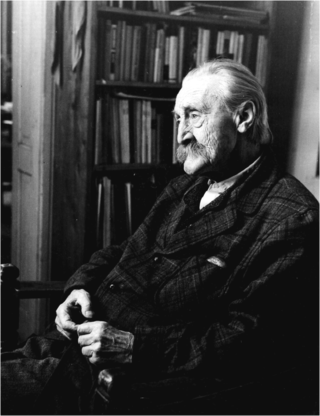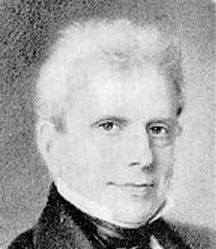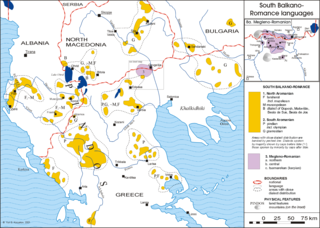Related Research Articles

Transylvania is a historical and cultural region in Central Europe, encompassing central Romania. To the east and south its natural border is the Carpathian Mountains and to the west the Apuseni Mountains. Broader definitions of Transylvania also include the western and northwestern Romanian regions of Crișana and Maramureș, and occasionally Banat. Historical Transylvania also includes small parts of neighbouring Western Moldavia and even a small part of south-western neighbouring Bukovina to its north east. The capital of the region is Cluj-Napoca.

Timișoara is the capital city of Timiș County, Banat, and the main economic, social and cultural centre in Western Romania. Located on the Bega River, Timișoara is considered the informal capital city of the historical Banat region. From 1848 to 1860 it was the capital of the Serbian Vojvodina and the Voivodeship of Serbia and Banat of Temeschwar. With 250,849 inhabitants at the 2021 census, Timișoara is the country's fifth most populous city. It is home to around 400,000 inhabitants in its metropolitan area, while the Timișoara–Arad metropolis concentrates more than 70% of the population of Timiș and Arad counties. Timișoara is a multicultural city, home to 21 ethnic groups and 18 religious denominations. Historically, the most numerous were the Swabian Germans, Jews and Hungarians, who still make up 6% of the population here.

The Aromanians are an ethnic group native to the southern Balkans who speak Aromanian, an Eastern Romance language. They traditionally live in central and southern Albania, south-western Bulgaria, northern and central Greece and North Macedonia, and can currently be found in central and southern Albania, south-western Bulgaria, south-western and eastern North Macedonia, northern and central Greece, southern Serbia and south-eastern Romania. An Aromanian diaspora living outside these places also exists. The Aromanians are known by several other names, such as "Vlachs" or "Macedo-Romanians".
This article is about the history of the Aromanians. For the history of Northern Vlachs (Romanians), see History of Romania.

Moscopole or Voskopoja is a village in Korçë County in southeastern Albania. During the 18th century, it was the cultural and commercial center of the Aromanians. At its peak, in the mid 18th century, it hosted the first printing house in the Ottoman Balkans outside Constantinople, educational institutions and numerous churches. It became a leading center of Greek culture but also with elements of Albanian and Aromanian culture, all with great influence from Western civilization.
The Transylvanian School was a cultural movement which was founded after part of the Romanian Orthodox Church in Habsburg-ruled Transylvania accepted the leadership of the pope and became the Greek-Catholic Church. The links with Rome brought to the Romanian Transylvanians the ideas of the Age of Enlightenment. The Transylvanian School's major centres were in the cities of Blaj (Balázsfalva), Oradea (Nagyvárad), Lugoj (Lugos) and Beiuș (Belényes).

Károly Kós was a Hungarian architect, writer, illustrator, ethnologist and politician of Austria-Hungary and Romania.

Gheorghe Șincai was a Romanian historian, philologist, translator, poet, and representative of the Enlightenment-influenced Transylvanian School.

Andrei Mocioni de Foen was an Austrian and Hungarian jurist, politician, and informal leader of the ethnic Romanian community, one of the founding members of the Romanian Academy. Of a mixed Aromanian and Albanian background, raised as a Greek Orthodox, he belonged to the Mocioni family, which had been elevated to Hungarian nobility. He was brought up at his family estate in the Banat, at Foeni, where he joined the administrative apparatus, and identified as a Romanian since at least the 1830s. He rose to prominence during the Hungarian Revolution of 1848: he was a supporter of the House of Lorraine, trying to obtain increased autonomy for Banat Romanians in exchange for loyalism. The Austrians appointed Mocioni to an executive position over that region, but curbed his expectations by including the Banat as a whole into the Voivodeship of Serbia. This disappointment pushed Mocioni to renounce politics during much of the 1850s.

Georgios Sinas was an Austrian-Greek entrepreneur and banker. He became a national benefactor of Greece and was the father of another Greek national benefactor, Simon Sinas. He was also the founder of the National Observatory of Athens.

The Aromanian language, also known as Vlach or Macedo-Romanian, is an Eastern Romance language, similar to Megleno-Romanian, Istro-Romanian and Romanian, spoken in Southeastern Europe. Its speakers are called Aromanians or Vlachs.

Nicolae Constantin Batzaria, was an Aromanian cultural activist, Ottoman statesman and Romanian writer. A schoolteacher and inspector of Aromanian education within Ottoman lands, he stood for the intellectual and political current, espoused by the Macedo-Romanian Cultural Society, which closely identified with both Romanian nationalism and Ottomanism. Batzaria was trained at the University of Bucharest, where he became a disciple of historian Nicolae Iorga, and established his reputation as a journalist before 1908—the string of publications he founded, sometimes with financial support from the Kingdom of Romania, includes Românul de la Pind and Lumina. During his thirties, he joined the clandestine revolutionary movement known as the Young Turks, serving as its liaison with Aromanian factions in Macedonia and Rumelia. He was briefly imprisoned for such activities, but the victorious Young Turk Revolution in 1908 brought him to the forefront of Ottoman politics.

The Aromanian dialects are the distinct dialects of the Aromanian language. The Aromanians are an ethnic group composed of several subgroups differentiated from each other by, among other things, the dialect they speak. The most important groups are the Pindeans, Gramosteans, Farsherots and Graboveans, each with their respective dialect. The Graboveans and their dialect are referred to by some authors as Moscopoleans and Moscopolean. The Aromanians of the villages of Gopeš and Malovište in North Macedonia also have their own distinctive dialect. A few scholars also add the Olympian dialect spoken in Thessaly, Greece, but the majority view is that Olympian is part of Pindean.
The Aromanian diaspora is any ethnically Aromanian population living outside its traditional homeland in the Balkans. The Aromanians are a small Balkan ethnic group living scattered throughout Albania, Bulgaria, Greece, North Macedonia, Romania and Serbia. Historically, they also used to live in other countries such as Bosnia and Herzegovina and Croatia, although they have ever since been assimilated.
Mihail George Boiagi was an Aromanian grammarian and professor in the Habsburg monarchy and the Austrian Empire. He was born on 3 February 1780 in Buda, today Budapest in Hungary. Boiagi was one of the first grammarians from the Balkans and a professor in a school in Vienna, where he taught Greek. He had origins from Moscopole, today in Albania. Boiagi was one of the main figures of the Aromanian diaspora in Austria and Hungary, the capitals of which, Vienna and Budapest respectively, became gathering centers for members of this community in the 19th century. Boiagi introduced the Aromanian historian Dimitrie Cozacovici to the Aromanian community of Austria and Hungary after Cozacovici's migration from Metsovo, today in Greece, to Buda.
Constantin Ucuta was an Aromanian academic and protopope. He was born in Moscopole, an economically powerful city and Aromanian centre at the time then part of the Ottoman Empire and now part of Albania. He migrated to Posen, in Prussia, and entered in contact with the small Aromanian community in the city, mostly composed by merchants. He became an academic and a protopope, serving in a church in Posen most likely erected by the typically Eastern Orthodox Aromanian merchants of the city. Other details about Ucuta's biography are scarce and poorly known.
The Aromanian Missal is an anonymous Aromanian-language instructive liturgical book (missal) variously referred to as dating from the beginning, the first half, the middle and the second half of the 18th century. It is the first extensive text in Aromanian, and includes translations of sermons and other religious texts into Aromanian. The Aromanian Missal is believed to have been written in Moscopole, once a prosperous Aromanian city, and uses the Greek alphabet due to archaic forms of Greek being considered the appropriate language for high and literary functions in those times within the Balkans. In recent times, the text of the liturgy has begun to circulate more actively among the Aromanians in Albania with support from the Aromanian diaspora. In a 2002 study on the Aromanians, German researcher Thede Kahl stated that priest Thomai sang this Aromanian-language liturgy at the St. Nicholas Church of Moscopole.
Nicolae C. Velo (1882–1924) was an Aromanian poet and diplomat in Romania. He was born in 1882 in Malovište, then in the Ottoman Empire and now in North Macedonia. After studying at the school in his hometown, Velo entered the Romanian Lyceum of Bitola, still in the Ottoman Empire, and later the now defunct Higher School of State Sciences of Bucharest, Romania, after which he became part of the Romanian diplomatic corps.
Stoica Lascu is a Romanian historian. He has authored over a dozen books and over 250 studies and articles in journals and volumes from Romania and abroad. An Aromanian from Dobruja, he specializes in the history of Romania, his native region and the Aromanians, as well as in various other topics.
References
Citations
- 1 2 3 Capidan 2000, p. 88.
- ↑ Dumbrăvescu 2014, p. 53.
- ↑ Dumbrăvescu 2014, pp. 52–53.
- ↑ Dumbrăvescu 2014, pp. 53–54.
- ↑ Lascu 2017, p. 14.
- 1 2 Dumbrăvescu 2014, p. 54.
- ↑ Lascu 2017, p. 5.
Bibliography
- Capidan, Theodor (2000) [1942]. Vidrașcu, Dan (ed.). Macedoromânii. Etnografie, istorie, limbă (PDF) (in Romanian). Editura Litera Internațional. ISBN 973-9355-52-8.
- Dumbrăvescu, Nicolae (2014). "Nicolae Ianovici, un deschizător de conștiință națională la aromânii din Imperiul Habsburgic". Astra Salvensis (in Romanian). 2 (3): 52–54.
- Lascu, Stoica (2017). "Intelectuali transilvăneni, moldoveni și "aurelieni" despre românii din Balcani (anii '30-'40 ai secolului al XIX-lea" (PDF). Annals of the Academy of Romanian Scientists: Series on History and Archaeology Sciences (in Romanian). 9 (2): 5–27. ISSN 2067-5682.